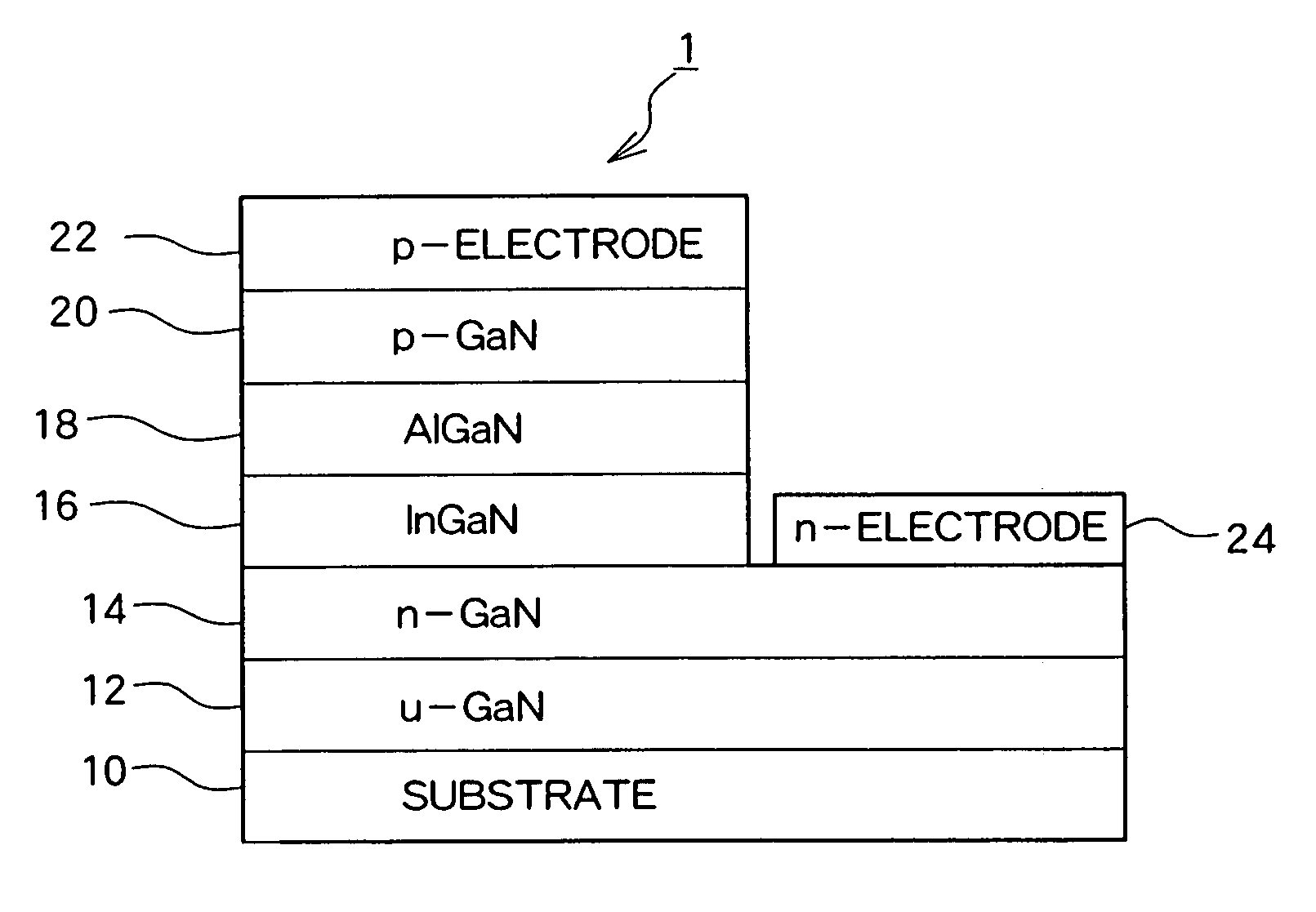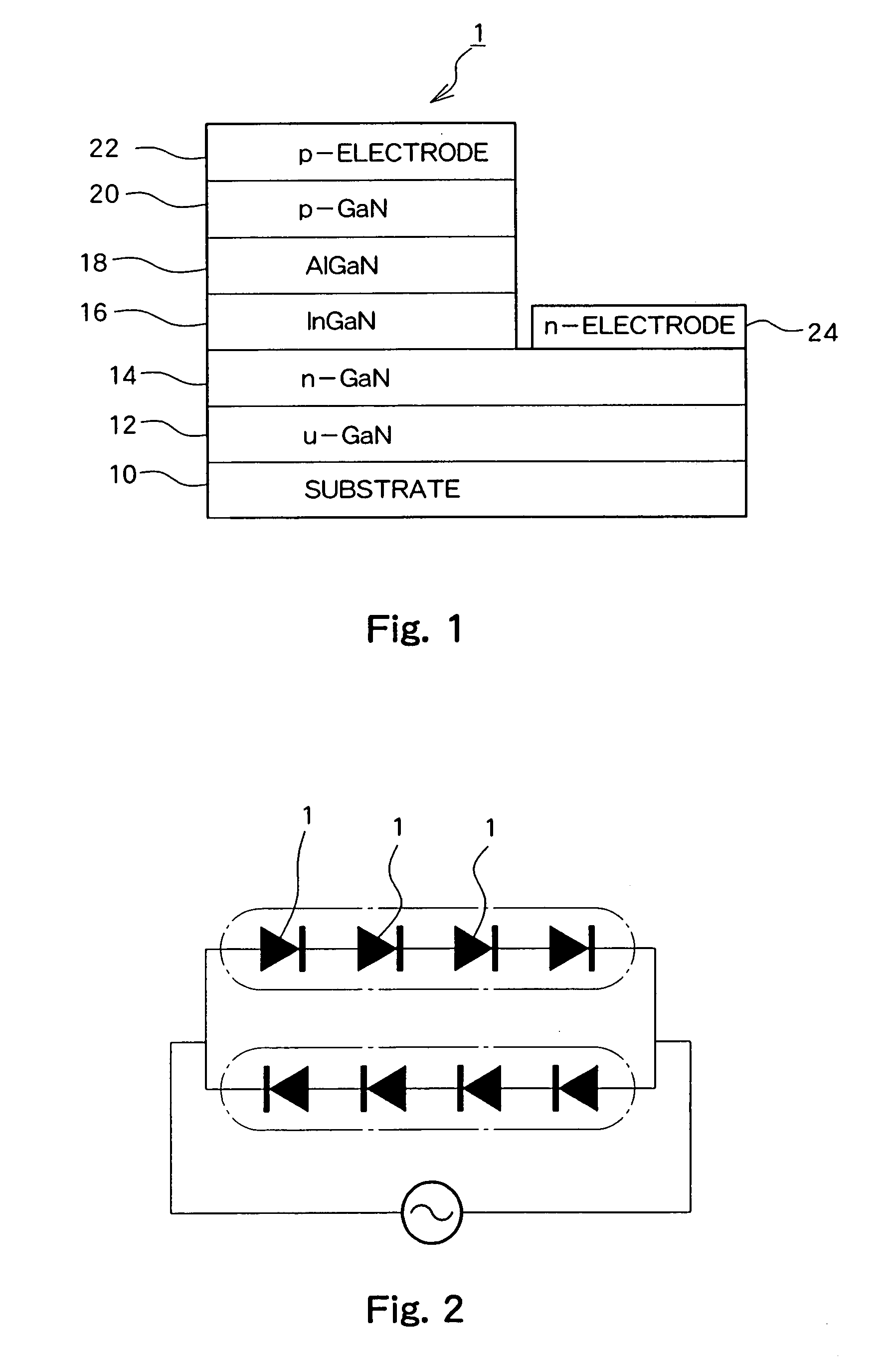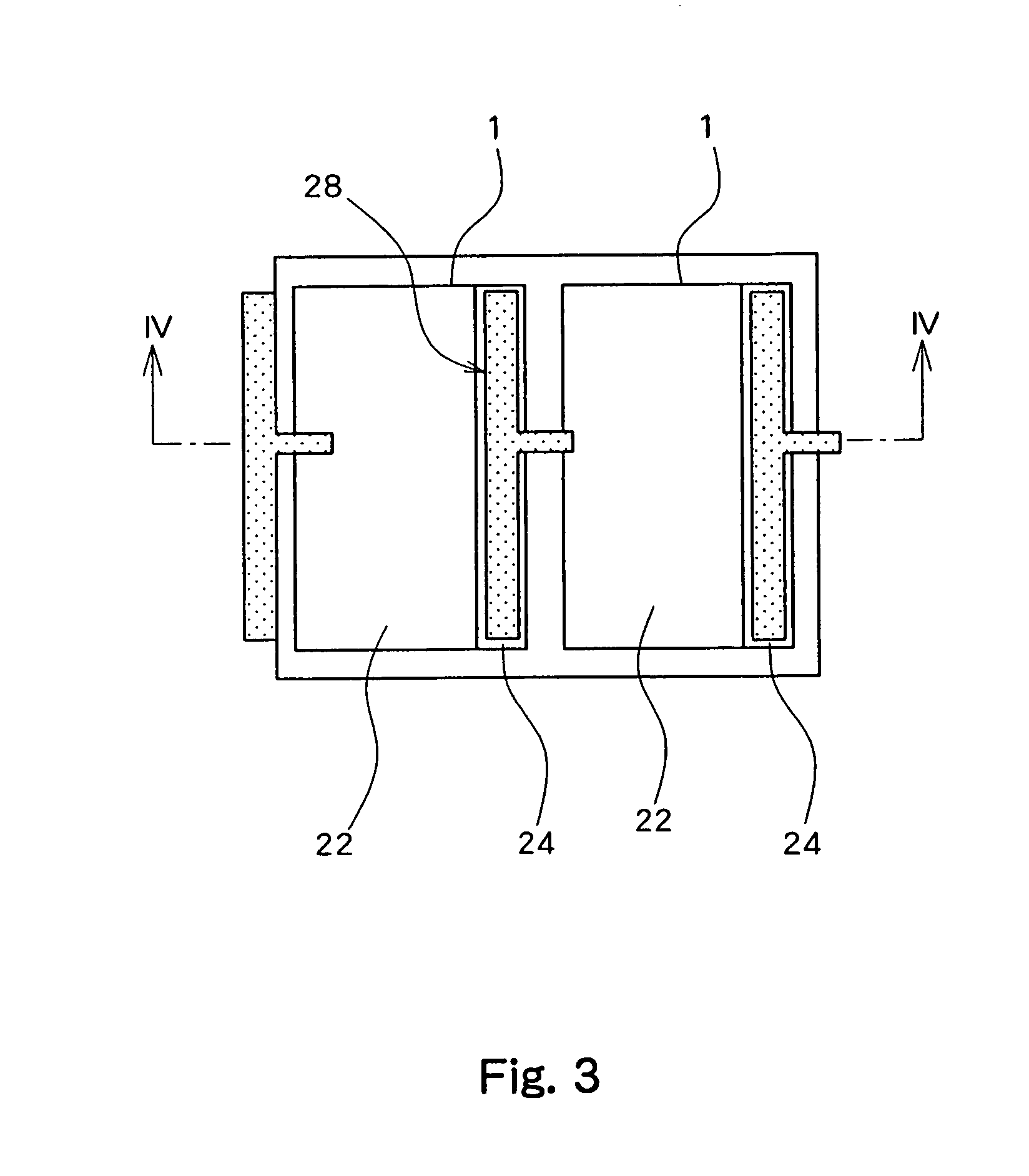Light-emitting device having light-emitting elements
a technology of light-emitting devices and light-emitting elements, which is applied in the direction of diodes, electronic switching, pulse techniques, etc., can solve the problem of not being able to increase the drive voltage sufficiently, and achieve the effect of high drive voltag
- Summary
- Abstract
- Description
- Claims
- Application Information
AI Technical Summary
Benefits of technology
Problems solved by technology
Method used
Image
Examples
Embodiment Construction
[0048] A preferred embodiment of the present invention will now be described referring to the drawings.
[0049]FIG. 1 shows a basic structure of an LED 1 which is a GaN-based compound semiconductor light emitting element of the present embodiment. The LED 1 has a structure in which a GaN layer 12, an Si-doped n-type GaN layer 14, an InGaN light emitting layer 16, an AlGaN layer 18, and a p-type GaN layer 20 are sequentially layered on a substrate 10, a p electrode 22 is formed in contact with the p-type GaN layer 20, and an n electrode 24 is formed in contact with the n-type GaN layer 14.
[0050] The LED shown in FIG. 1 is manufactured through the following process. First, a sapphire c-plane substrate is thermally treated for 10 minutes in a hydrogen atmosphere at a temperature of 1100° C. in an MOCVD device. Then, the temperature is reduced to 500° C. and silane gas and ammonia gas are supplied for 100 seconds to form a discontinuous SiN film on the substrate 10. This process is appl...
PUM
 Login to View More
Login to View More Abstract
Description
Claims
Application Information
 Login to View More
Login to View More - R&D
- Intellectual Property
- Life Sciences
- Materials
- Tech Scout
- Unparalleled Data Quality
- Higher Quality Content
- 60% Fewer Hallucinations
Browse by: Latest US Patents, China's latest patents, Technical Efficacy Thesaurus, Application Domain, Technology Topic, Popular Technical Reports.
© 2025 PatSnap. All rights reserved.Legal|Privacy policy|Modern Slavery Act Transparency Statement|Sitemap|About US| Contact US: help@patsnap.com



